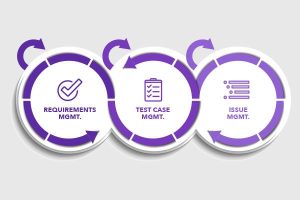Agile project management is an incremental approach to executing a project from the beginning to the end of its life cycle.
The agile life cycle consists of several iterative and incremental steps geared to the successful completion of a project. This approach is best used in a fast-paced business environment.
Agile project management allows for in-process modifications and adjustments as opposed to the traditional project management approach.
One of the objectives of an agile business is to be able to produce several viable/beneficial products throughout the process rather than at the end.
This provides for adaptability, expansion if necessary, and sometimes even a change in the project’s direction.
In this article, we will explain the principles of agile project management, its application life-cycle, and why it is good for your Nigerian business.
Table of Contents
Principles of Agile Project Management
Agile project management is the polar opposite of traditional project management methodologies. An example is the waterfall methodology. Agile methodology was founded on the principles of flexibility, communication, and collaboration.
It is an approach centered around users and a consistent delivery of value throughout the life cycle of a project.
An agile business focuses on the delivery of a viable profitable product one step at a time against the time and budget allowed.
Following this process are core principles Agile project management follows. They are listed below;
-
Interactions between individuals over tools and processes
The prioritization of communication and interaction over tools and processes is the core foundation of agile management. It is found in the system of teams against hierarchy, collusion over individuality, and so on.
-
Minimum viable product over comprehensive documentation
Producing a viable product at each step of the development and management process is the key focus of agile project management.
The agility of a project is its ability to produce value-centered results through its cycle, as compared to the traditional project management methodology that prioritizes comprehensive documentation over all else.
Read also: Top business mistakes you need to avoid or fix now.
-
User-centered collaboration over contract negotiation
Agile project management is a user-centered management process. The process includes a series of meetings and collaboration between shareholders and the project team based solely on the users’/consumers’ needs.
-
Adaptive response to change over following a plan
Flexibility and adaptability are core principles that have made agile project management favorable over other methodologies.
The ease of change, alteration, curtailment, and expansion are core strengths of agile project management.
Agile Application LifeCycle Management (ALM)

Agile application life cycle
The agile application life-cycle is the life-cycle of an agile project application including the frameworks, and strategies used during the life-cycle of the project.
It provides an integrated approach to project management by focusing on the user side of application development and collaboration among stakeholders.
The key phases of Agile application management are broken down based on the operations involved in the project.
However, find below three key phases encompassing all the steps taken in an agile project management lifecycle.
Phases of Agile Application Lifecycle Management (ALM)
-
Requirement management
All official and legal documents needed through the life-cycle of the project are sourced and prepared at this phase. User research, market research, industry trends, and qualitative and quantitative data are all collected and analyzed during the requirement phases.
Examples of some of these documents include SRS documents, Project Scope, Project road map, and BMC, among others.
Read also: Successful product marketing for Nigerian businesses.
-
Test case management
In the test case management phase, the development and deployment of the project take place. All members of the team and stakeholders come together to kick-start the sprint jumps.
User stories are developed at this phase including test case scenarios.
During the test case management phase, viable products are developed and tested at the end of each sprint to ensure compliance with the objectives and goals stated by the required documents.
This is the core phase in the agile application lifecycle, as collaboration, communication, and skills are high factors in the general success of the project.
-
Issue management
Product Quality assurance and User experience quality assurance mainly take place at this level. Though during sprints, each product/feature developed is tested by a software tester, general quality assurance is also carried out towards the end of the project.
This is not only to ensure the deliverables pass the quality test successfully, but it is also to ensure quality and seamless experience for the consumer.
Seeing that agile project management is iterative and incremental by nature, the issue management stage is also a continuous process.
Why Agile Project Management is Good For Your Business
Agile project management helps your business venture concentrate on what matters the most; people, and customers.
The agility of communication takes a business through a process of flexibility, for better management decisions and investments.
A business that adopts the agile management methodology, stands a better chance of producing quality products/deliverables, providing 100 percent user satisfaction, and also experiencing growth and expansion on a large scale.
These are all due to cost and resource reduction, flexibility, embracing change, transparency, collaboration, and communication.
Some other benefits of agile management for your businesses are penned below.
Read also: Using Facebook Ads for Business growth.
Benefits of Agile Project Management
-
Customer-centered
Agile project management helps businesses focus on their customers’ needs and the resources needed to achieve that.
Through agile, businesses deliver value to their customers incrementally by prioritizing their needs, giving prompt feedback, and getting them involved in the decision-making process.
Aside from it leaving an immeasurable impact on your customers, it also saves time, cost, resources, and energy.
Allowing your team to explore their creativity in continuously meeting and surpassing consumers’ wants.
-
Fosters a healthy work environment and breaks barriers
One of the core values of agile project management is a continuous improvement both for the project and the team.
This involves healthy collaboration and communication among team members, stakeholders, and customers.
Agile breaks barriers and promotes the overall success of businesses through transparency and openness – some core values of agile and scrum.
It breeds a learning culture that embraces flexibility and change while challenging failure.
Most businesses adapting agile management suffer less loss, more productive decisions, more success, and growth, and also provide a healthy work-life balance for their employees – thanks to its high flexibility and adaptation to change.
-
Improved product quality
A product or business decision borne out of meeting the needs of the consumers will do better compared to its counterparts.
Improved product quality is among the most valued benefits of agile management. It makes product differentiation easier, solves an actual need for the consumers, and also builds a specified target market for businesses thereby producing more returns on investment.
-
Satisfied customers
By involving customers in the decision-making process, agile businesses deliver exactly what their customer needs, thereby satisfying them and reducing the waste of resources.
These custom-made deliverables improve consumer experience and also boosts customer retention.
-
Increased project control and coordination
Even without the involvement of one hundred percent documentation as compared to the waterfall methodology, agile management boosts a more controlled and organized project environment.
With its measurable project deliverables period – sprints, and its transparency with its management tools – Jira or Trello, Agile management promotes a more controlled and coordinated project delivery environment.
Conclusion
Not all businesses in Nigeria can adopt the agile methodology fully, but most businesses can start with the hybrid mode.
With the ever-changing times and series of emerging technology – including AI, it is of imperial essence that every business understands the role agile management will play in the growth and sustenance of their business both now and in the nearest future.
Subscribe to our newsletter for more articles on business insights, and scale your business.
About Author
- Content and technical writer with seasoned experience in storytelling, user research, client satisfaction, and customer relationship management.
Latest entries
 Business InsightsMarch 2, 2023Agile Project Management: Why it is Good for Your Business
Business InsightsMarch 2, 2023Agile Project Management: Why it is Good for Your Business CareerJanuary 15, 2023A Guide to Problem-solving in the Workplace
CareerJanuary 15, 2023A Guide to Problem-solving in the Workplace Business InsightsDecember 10, 2022How to Deliver Excellent Customer Service in Your Business
Business InsightsDecember 10, 2022How to Deliver Excellent Customer Service in Your Business Business InsightsNovember 11, 2022How to Write a Business Report: Definition, Format, and Samples
Business InsightsNovember 11, 2022How to Write a Business Report: Definition, Format, and Samples

